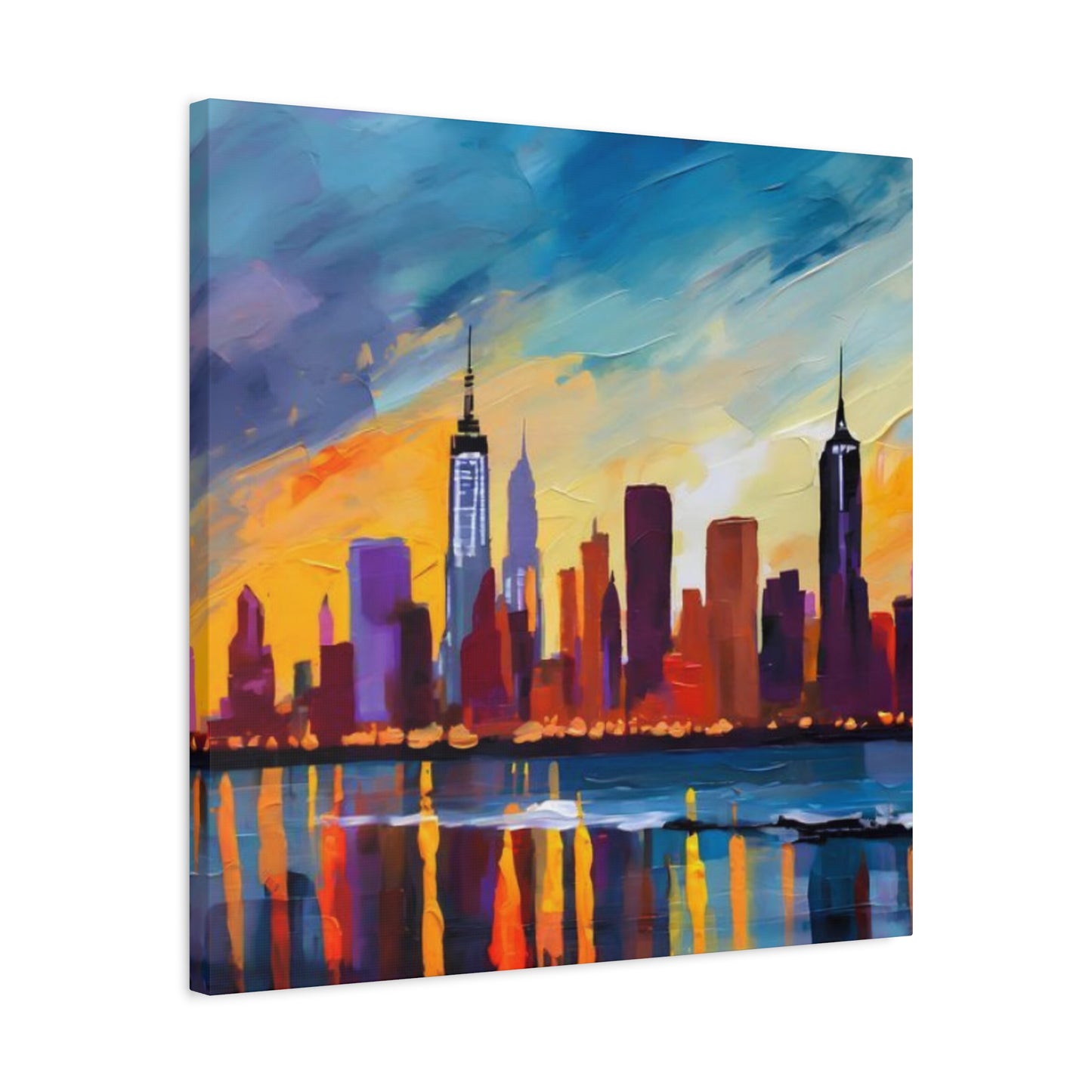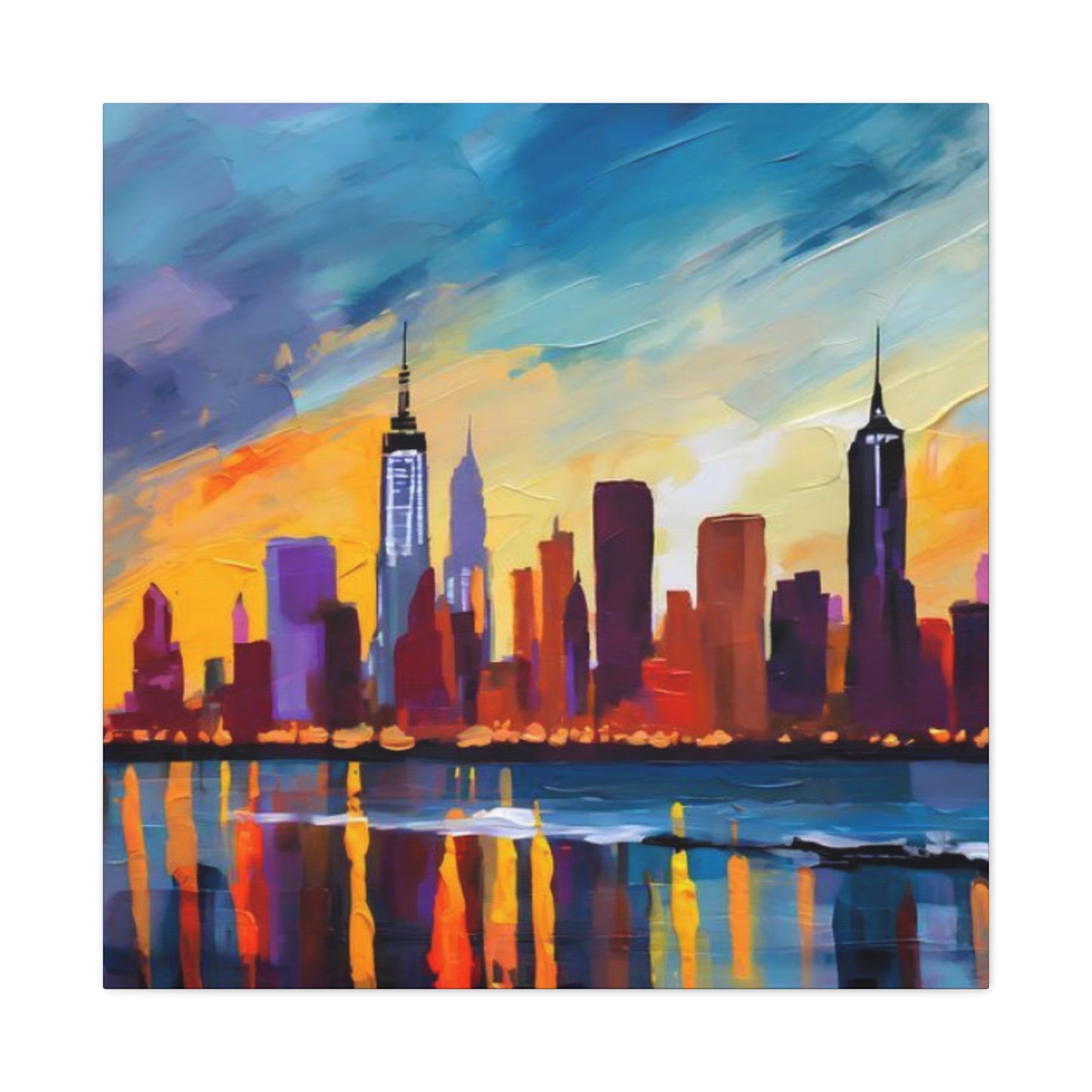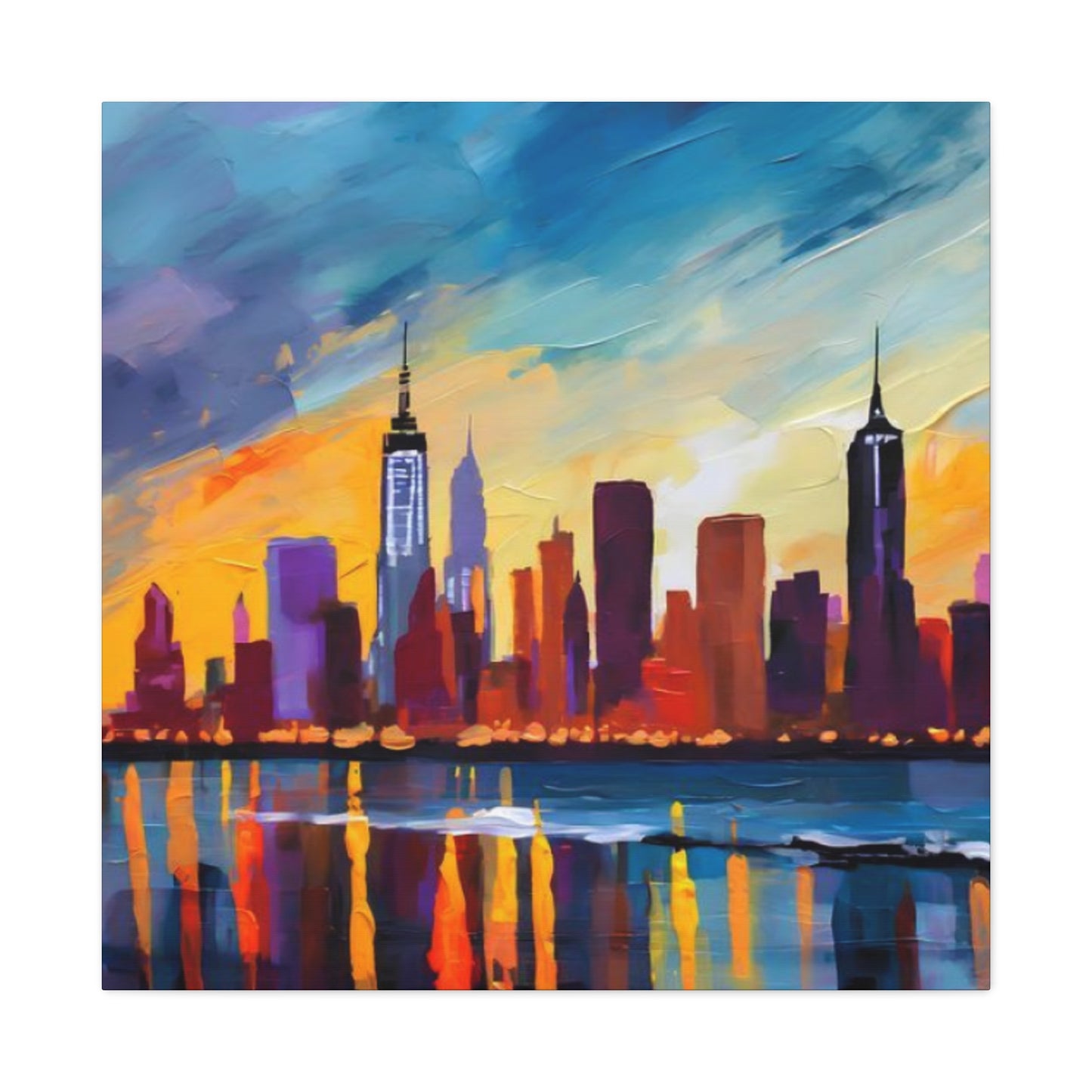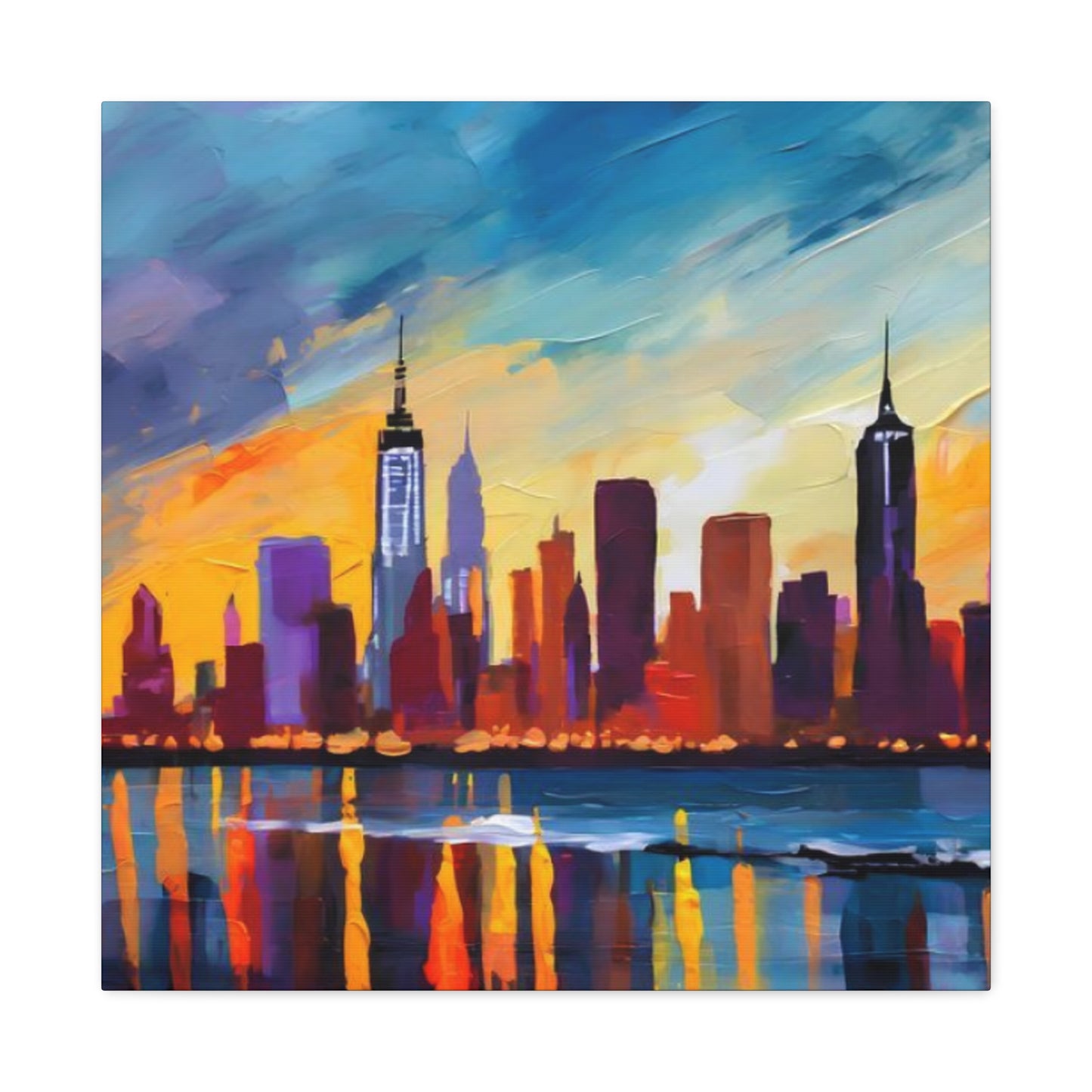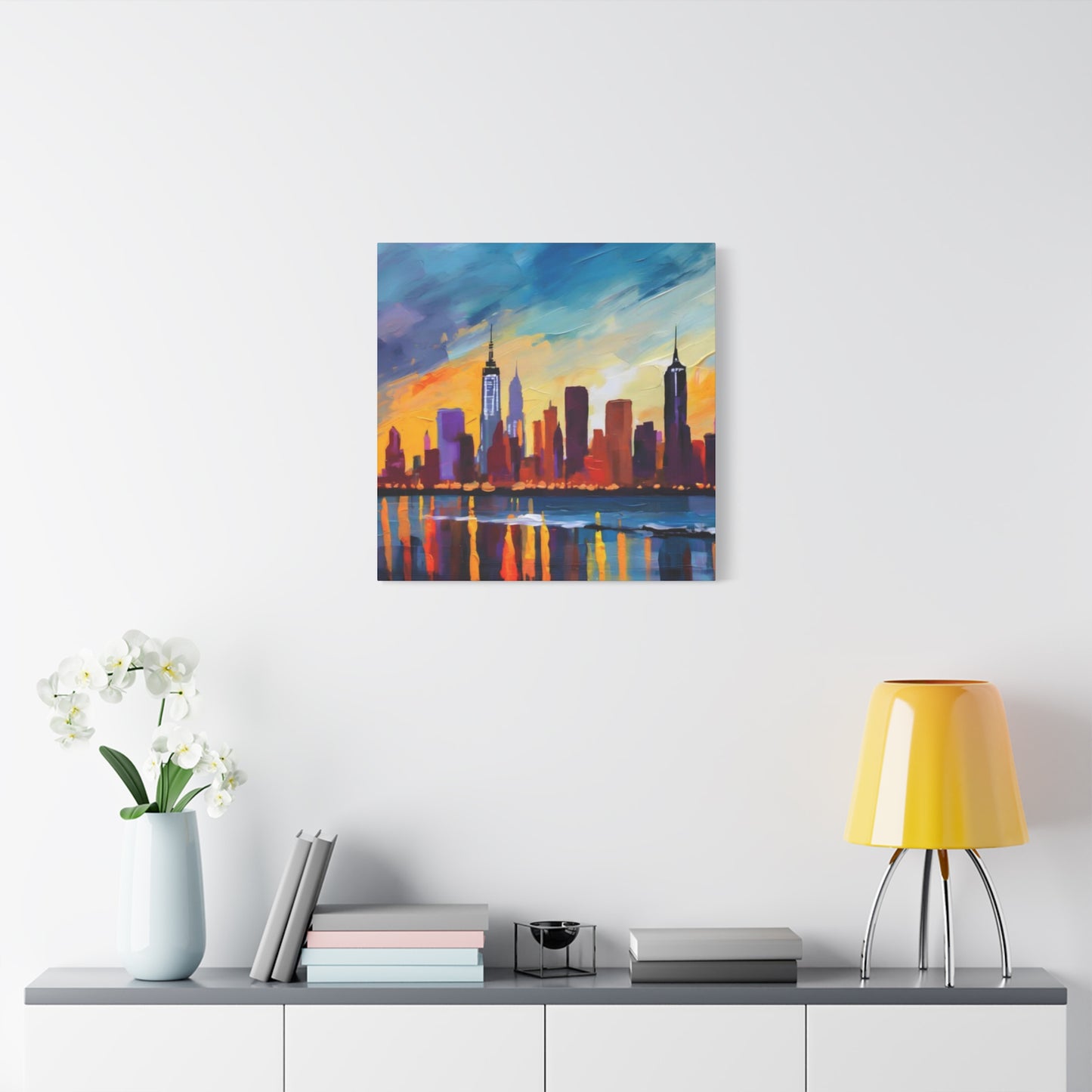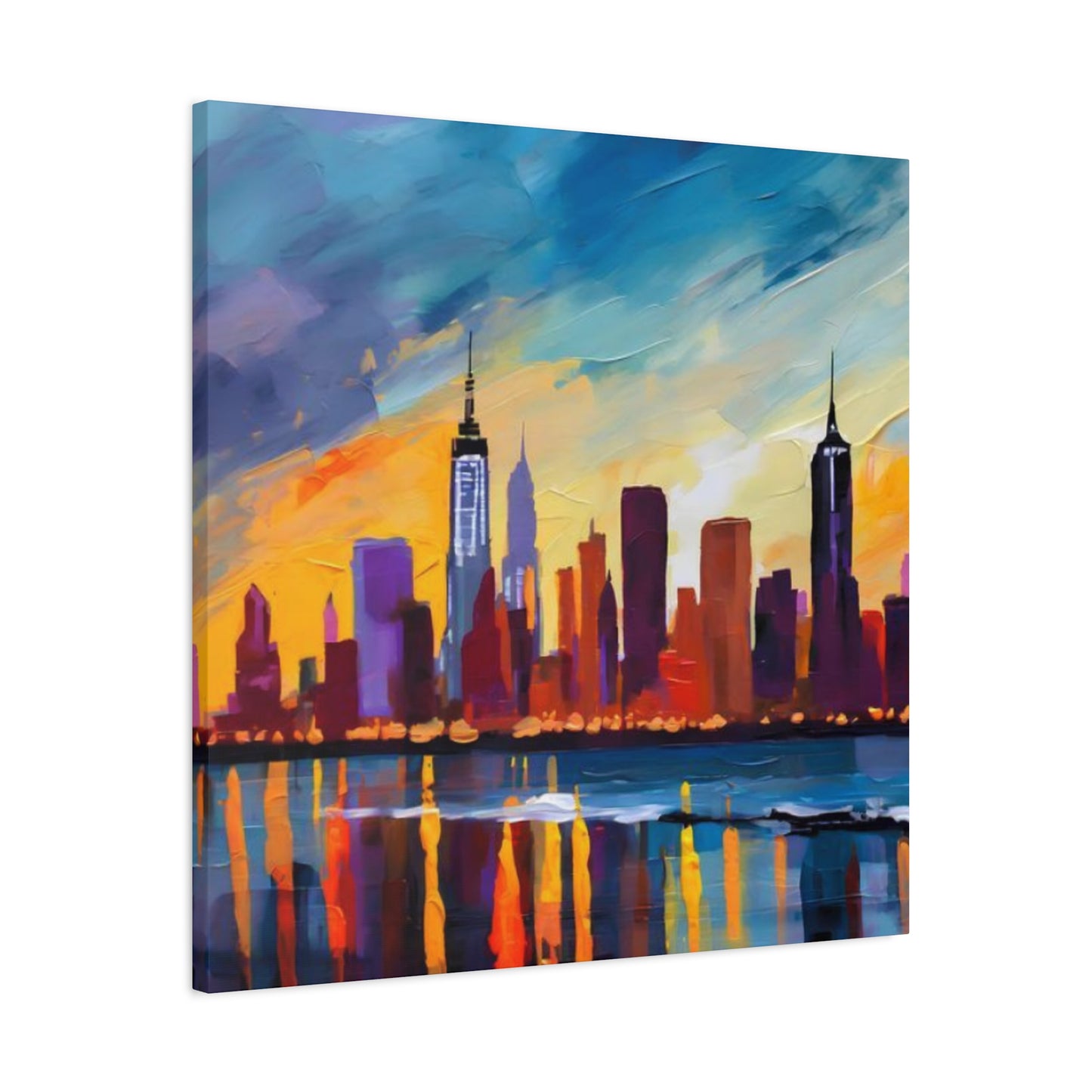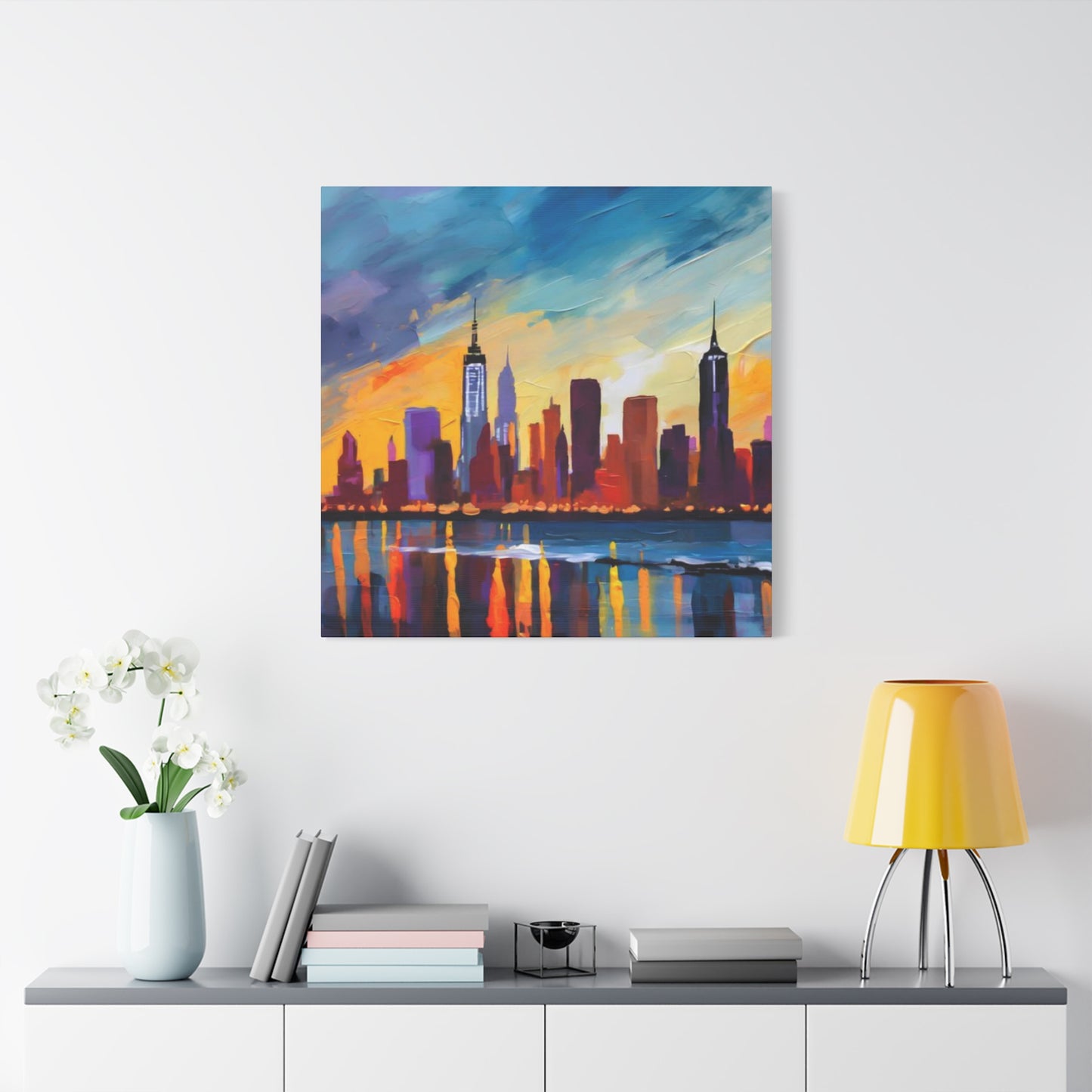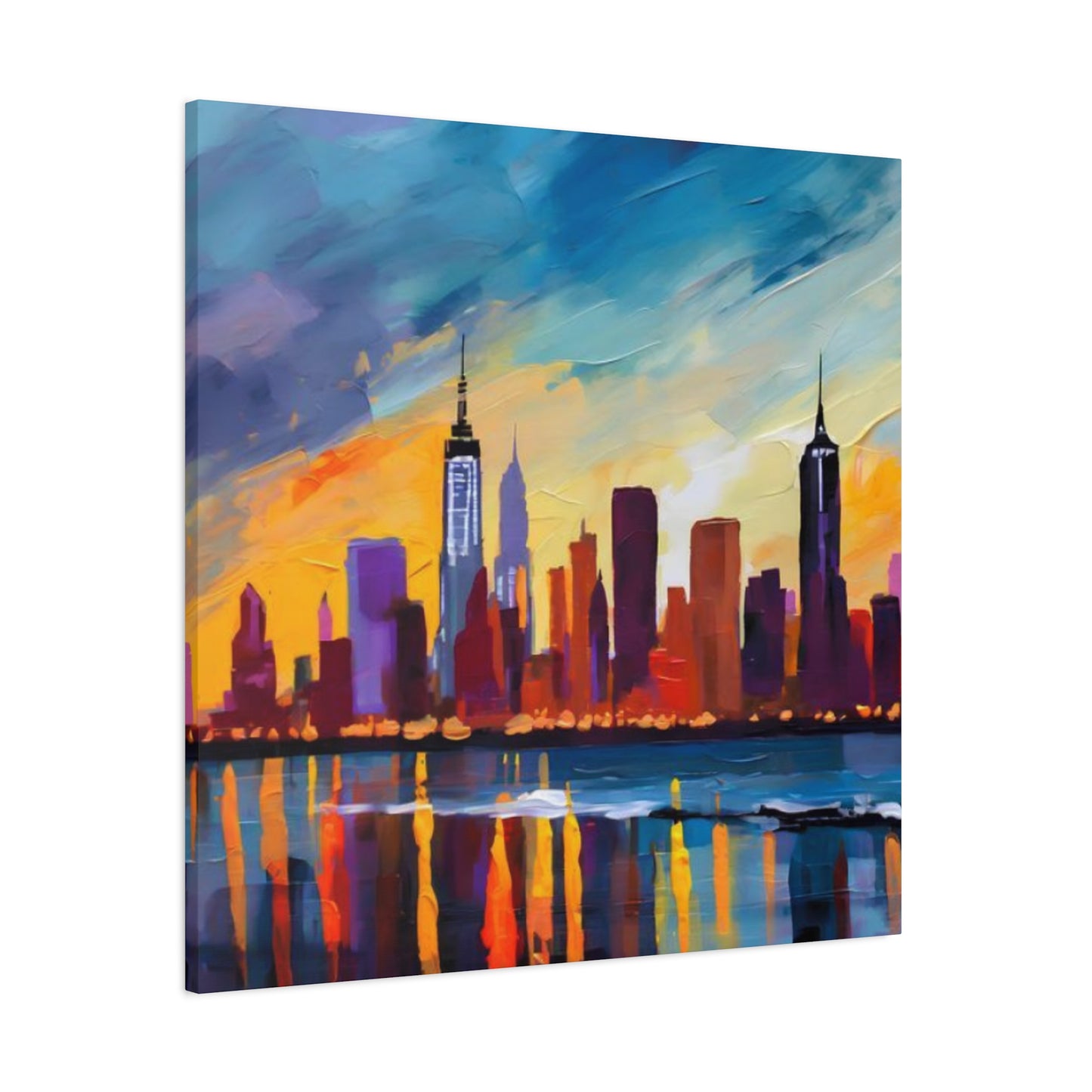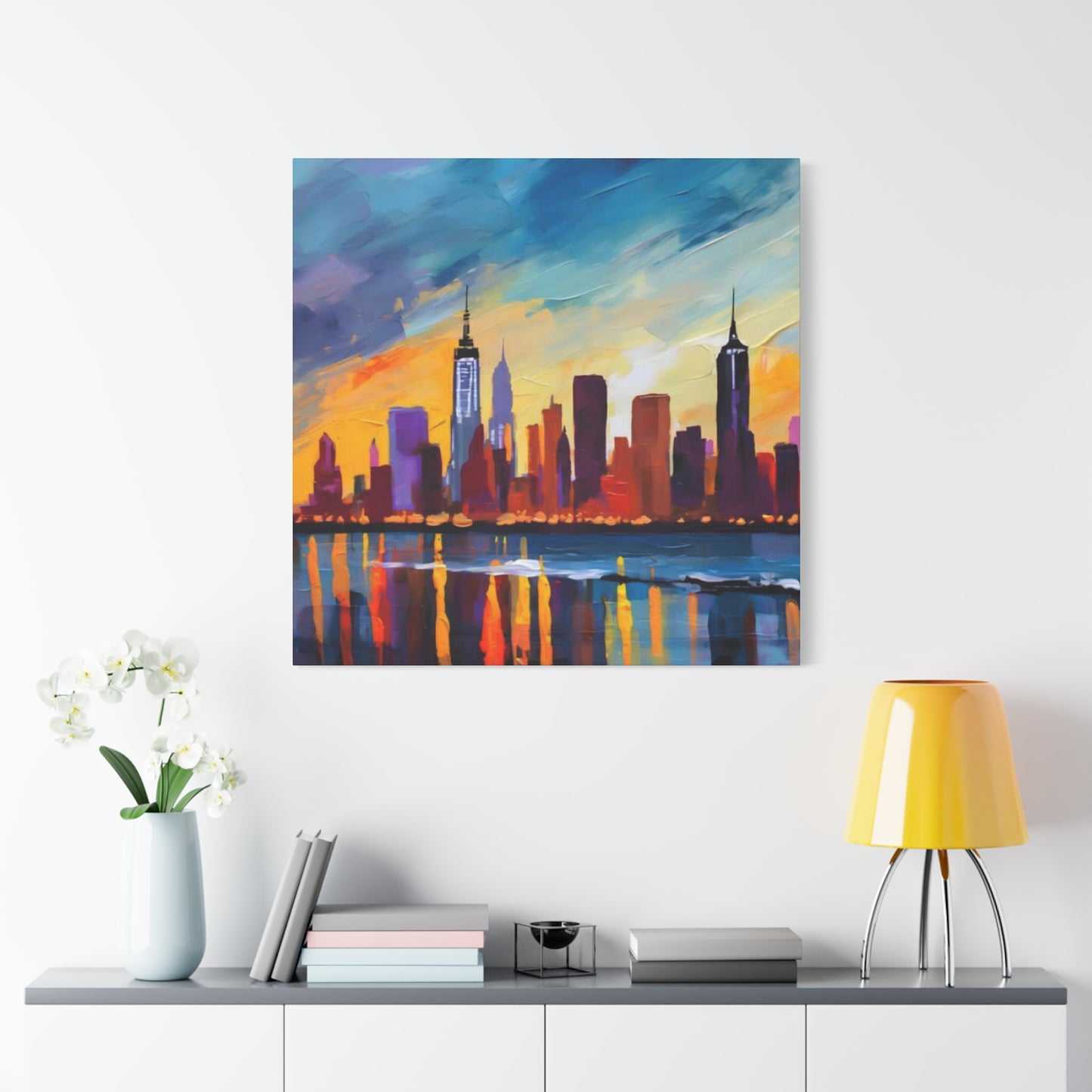Transform Your Space with Stunning NYC Skyline View From Sea Drawing and Wall Art
New York City stands as one of the most recognizable metropolitan areas across the globe, with its distinctive architectural silhouette capturing the imagination of artists, designers, and art enthusiasts for generations. The skyline view from sea drawing NYC skylines wall art represents more than just decorative pieces; these artworks embody the spirit of urban achievement, architectural innovation, and the dynamic energy that defines the city that never sleeps. When viewed from the water, the Manhattan skyline presents a breathtaking panorama that has inspired countless artistic interpretations, each capturing different moods, lighting conditions, and perspectives of this iconic cityscape.
The appeal of NYC skyline artwork transcends simple decoration. These pieces serve as conversation starters, focal points in interior design, and tangible connections to one of the world's most vibrant cities. Whether you have personal memories of visiting New York, dream of experiencing the city firsthand, or simply appreciate the aesthetic beauty of urban landscapes, skyline view from sea drawing NYC skylines wall art brings that metropolitan energy into your living or working space. The view from the water provides a particularly striking perspective, as it allows the viewer to appreciate the full scope of the city's architectural achievements, from the historic buildings of Lower Manhattan to the modern glass towers of Midtown.
Artists who specialize in NYC skyline artwork often spend considerable time studying the city from various vantage points, understanding how light interacts with the buildings at different times of day, and capturing the unique atmospheric conditions that make each view distinctive. The perspective from the sea or waterfront offers unobstructed views that showcase the city's vertical grandeur, making it a preferred subject for both traditional and contemporary artists. This artistic tradition dates back over a century, with each generation of artists bringing new techniques, styles, and interpretations to the timeless subject of New York's architectural landscape.
Why Maritime Perspectives Create the Most Dramatic NYC Skyline Art
The waterfront perspective holds a special place in the tradition of New York City skyline artwork, offering unique advantages that land-based viewpoints cannot match. When artists create a skyline view from sea drawing NYC skylines wall art, they capture the city as it was meant to be seen, rising dramatically from the waters that have defined its history and development. This maritime perspective provides several distinct benefits that make it particularly compelling for both artists and viewers.
First, the water creates a natural foreground that adds depth and dimension to the composition. The reflections of buildings on the water's surface double the visual impact, creating mirror images that enhance the sense of scale and grandeur. These reflections change constantly with the movement of the water, meaning that no two views are ever exactly alike. Artists who work with this perspective often emphasize these reflective qualities, using them to add dynamism and visual interest to their compositions. The interplay between the solid architecture above and its fluid reflection below creates a natural balance that is inherently pleasing to the eye.
Second, viewing the skyline from the water eliminates the visual clutter of street-level obstacles. There are no foreground buildings, vehicles, or infrastructure to obstruct the view, allowing the skyline itself to dominate the composition. This unobstructed perspective enables artists to capture the full sweep of the city's architectural profile, from the distinctive spire of One World Trade Center to the art deco crown of the Chrysler Building. The clarity of this view makes it ideal for creating artwork that truly showcases the city's most recognizable features.
The maritime perspective also carries historical significance. For millions of immigrants arriving in America, their first glimpse of New York came from the decks of ships entering the harbor. This view from the water represents hope, opportunity, and new beginnings, emotional resonances that continue to give skyline view from sea drawing NYC skylines wall art a deeper meaning beyond mere aesthetics. Modern artists working in this tradition tap into these historical associations, creating works that speak to both personal and collective experiences of the city.
Additionally, the distance provided by a water-based viewpoint allows for a more comprehensive understanding of the city's layout and development patterns. You can see how different architectural eras and styles coexist, how the density of buildings varies across different neighborhoods, and how the skyline has evolved over time. This panoramic quality makes maritime perspective artwork particularly effective as educational tools and historical documents, in addition to being visually stunning decorative pieces.
Exploring Different Artistic Styles in NYC Skyline Drawings
The beauty of skyline view from sea drawing NYC skylines wall art lies in its versatility across different artistic styles and mediums. Each approach brings its own unique qualities and emotional resonance to the subject, allowing collectors to find pieces that perfectly match their personal aesthetic preferences and interior design schemes. From photorealistic renderings to abstract interpretations, the range of styles available ensures that there is NYC skyline artwork to suit every taste and space.
Realistic and photorealistic styles aim to capture the skyline with maximum accuracy and detail. Artists working in this tradition meticulously render every architectural feature, window, and structural element, creating works that serve almost as architectural documents. These pieces often appeal to viewers who appreciate technical skill and want artwork that faithfully represents the actual appearance of the city. The level of detail in realistic skyline drawings can be extraordinary, with some artists spending hundreds of hours perfecting the proportions, perspectives, and lighting effects that make their work virtually indistinguishable from photographs.
Impressionistic approaches to NYC skyline art take a different path, focusing on capturing the mood and atmosphere of the scene rather than precise architectural details. These works often feature loose, expressive brushwork or mark-making that suggests the forms of buildings rather than defining them explicitly. Impressionistic skyline view from sea drawing NYC skylines wall art excels at conveying the energy and vitality of the city, using color and light to create emotional impact. The softness of this approach can make the artwork feel more accessible and less overwhelming than highly detailed realistic pieces.
Minimalist interpretations reduce the skyline to its essential elements, using clean lines and simplified forms to create striking, contemporary compositions. This style often employs limited color palettes, perhaps just black silhouettes against white backgrounds, or subtle gradations of a single hue. Minimalist NYC skyline artwork works particularly well in modern, streamlined interior designs where simplicity and visual restraint are valued. Despite their apparent simplicity, these works can be remarkably powerful, proving that sometimes less truly is more.
Abstract and expressionistic styles push further from literal representation, using the skyline as a starting point for more interpretive explorations. These works might fragment the cityscape into geometric shapes, overlay multiple perspectives, or use non-representational color schemes to evoke feelings rather than depict reality. Abstract skyline view from sea drawing NYC skylines wall art appeals to collectors who want artwork that stimulates imagination and conversation, pieces that reward extended viewing and contemplation.
Contemporary digital art styles have also emerged as important contributors to the NYC skyline art tradition. Digital artists can manipulate photographs, create hybrid works combining drawing and digital techniques, or generate entirely computer-created interpretations of the skyline. These modern approaches often incorporate elements like enhanced colors, surreal lighting effects, or imaginative alterations to the actual cityscape, resulting in works that feel both familiar and fantastical.
The Historical Evolution of New York City Skyline Artwork
The artistic tradition of depicting New York City's skyline has evolved alongside the city itself, with each era of development inspiring new waves of artistic interpretation. Understanding this historical context enriches appreciation for contemporary skyline view from sea drawing NYC skylines wall art, as today's artists build upon and respond to this long tradition. The story of NYC skyline artwork is inseparable from the story of the city's physical transformation from a modest colonial port to a towering modern metropolis.
In the early nineteenth century, New York's skyline was relatively modest, dominated by church steeples and the masts of sailing ships rather than tall buildings. Artists of this period captured a horizontal rather than vertical city, with waterfront scenes emphasizing maritime commerce and activity. These early works established the tradition of depicting New York from the water, a perspective that would gain even greater significance as the city began its dramatic vertical expansion.
The late nineteenth and early twentieth centuries witnessed the birth of the skyscraper age, fundamentally transforming both the city and its artistic representation. The construction of early tall buildings like the Flatiron Building, Singer Building, and Woolworth Building gave New York a distinctive skyline unlike anything previously seen in human history. Artists responded enthusiastically to these changes, creating works that celebrated the modernity and ambition represented by these soaring structures. Photographers and illustrators of this era established many of the compositional approaches still used in contemporary skyline view from sea drawing NYC skylines wall art.
The 1930s represented a golden age of New York skyscraper construction and skyline artwork. The completion of the Chrysler Building and Empire State Building gave the city instantly iconic architectural landmarks that dominated artistic depictions. Art Deco aesthetics influenced both the buildings themselves and the artwork created about them, resulting in stylized, streamlined representations that emphasized vertical lines and geometric patterns. This era also saw the rise of promotional artwork depicting the skyline, as the city's dramatic appearance became a powerful marketing tool for attracting business, tourism, and investment.
The post-World War II period brought new architectural styles and artistic movements that changed how artists approached the NYC skyline. The construction of glass and steel International Style towers, particularly along Park Avenue, introduced a different aesthetic vocabulary. Pop Art and other contemporary art movements of the 1960s and 1970s brought new interpretations, with artists like Andy Warhol incorporating skyline imagery into their explorations of American culture and identity. These decades also saw increasing environmental awareness, with some artists beginning to question the ecological and social implications of unlimited urban growth.
The tragic events of September 11, 2001, profoundly impacted NYC skyline artwork. The loss of the Twin Towers meant that artists could no longer depict the contemporary skyline without acknowledging this absence, while historical depictions of the pre-2001 skyline took on new poignancy. Many artists created memorial works or pieces that explicitly addressed themes of loss and resilience. The subsequent construction of One World Trade Center provided a new focal point for skyline compositions, with artists exploring how this building honors the past while pointing toward the future.
Contemporary NYC skyline artwork reflects our current moment of technological sophistication, environmental consciousness, and artistic pluralism. Today's artists have access to digital tools that previous generations could not imagine, yet many choose to work in traditional mediums like drawing, painting, and printmaking. The diversity of styles and approaches available in current skyline view from sea drawing NYC skylines wall art reflects broader trends in contemporary art, where no single style or movement dominates. This pluralism allows for extraordinary creativity and ensures that NYC skyline artwork remains vital and relevant.
Choosing the Perfect NYC Skyline Wall Art for Your Space
Selecting the right skyline view from sea drawing NYC skylines wall art for your home or office involves considering multiple factors that go beyond simple aesthetic preference. The size, style, color palette, and framing of the artwork all play crucial roles in determining whether a piece will successfully enhance your space or feel out of place. Taking time to carefully consider these elements ensures that your investment in NYC skyline artwork will provide lasting satisfaction and visual impact.
Scale represents one of the most critical considerations when choosing wall art. A common mistake is selecting pieces that are too small for the wall space they will occupy, resulting in artwork that gets lost and fails to make the intended impact. As a general guideline, artwork should occupy roughly two-thirds to three-quarters of the width of the furniture piece below it, such as a sofa or console table. For large, unobstructed walls, consider going even bigger, as oversized skyline view from sea drawing NYC skylines wall art can create a stunning focal point that commands attention and defines the character of the entire room.
Color coordination between the artwork and your existing décor requires careful attention. While you might love a vibrant, colorful skyline piece, it may clash with your established color scheme. Consider whether you want the artwork to blend harmoniously with existing colors or serve as a bold accent that introduces new hues. Many interior designers recommend pulling accent colors from artwork to use in accessories like throw pillows, vases, or rugs, creating visual connections that tie the room together. Alternatively, black and white or monochromatic NYC skyline artwork provides maximum flexibility, working with virtually any color palette.
The style of the artwork should complement your overall design aesthetic. A sleek, minimalist skyline drawing works beautifully in contemporary, modern, or Scandinavian-inspired spaces, while a more detailed, realistic rendering might suit traditional or classic interiors. Consider the other decorative elements in your space and choose skyline view from sea drawing NYC skylines wall art that feels cohesive rather than jarring. That said, sometimes a piece that provides stylistic contrast can create interesting tension and visual interest, so don't be afraid to bend rules if something speaks to you strongly.
Framing choices significantly impact how artwork integrates into your space. Traditional wood frames in warm tones work well in classic or rustic interiors, while sleek metal frames in black, white, or metallic finishes suit modern aesthetics. The mat board, if used, provides another opportunity to customize the piece to your space. Wide mats can make smaller artworks feel more substantial, while thin mats or no mat at all creates a more contemporary, streamlined appearance. For a truly modern look, consider floating frames or face-mounting, where the artwork appears to float within clear acrylic.
The placement of your NYC skyline artwork affects both its visual impact and the overall feel of the room. Eye level is generally the ideal height for hanging artwork, with the center of the piece positioned approximately 57 to 60 inches from the floor. However, this guideline may need adjustment based on ceiling height and furniture arrangement. In rooms with tall ceilings, hanging artwork slightly higher can prevent it from feeling lost in the lower portion of the wall. Above furniture, maintain a gap of about 6 to 8 inches between the furniture and the bottom of the frame.
Lighting dramatically influences how your skyline view from sea drawing NYC skylines wall art appears and how much impact it creates. Natural light from windows can illuminate artwork beautifully during daylight hours, though you should be cautious about direct sunlight, which can cause fading over time. For evening viewing and to create dramatic effects, consider installing picture lights or track lighting specifically aimed at your artwork. LED lights are ideal for this purpose, as they produce minimal heat and won't damage the artwork over time.
Different Mediums and Techniques in NYC Skyline Drawings
The medium and technique used to create skyline view from sea drawing NYC skylines wall art profoundly influences the final appearance, texture, and emotional quality of the work. Artists working with different mediums bring unique strengths and characteristics to their interpretations of the NYC skyline, offering collectors a rich variety of options. Understanding these different approaches helps in appreciating the skill involved in creating these works and in making informed decisions when selecting pieces for your collection.
Traditional pencil and graphite drawings represent perhaps the most classic approach to skyline artwork. The medium allows for extraordinary precision and subtle tonal variations, making it ideal for highly detailed, realistic renderings. Artists can achieve remarkable effects through techniques like cross-hatching, stippling, and blending, building up layers of graphite to create depth and three-dimensionality. Pencil drawings of the NYC skyline often emphasize the architectural details of individual buildings, capturing the play of light and shadow across different surfaces. The monochromatic nature of graphite work gives these pieces a timeless, elegant quality that works in almost any setting.
Charcoal offers a more dramatic, expressive alternative to pencil, with rich, deep blacks and a distinctive texture. Charcoal drawings can range from soft and atmospheric to bold and graphic, depending on the type of charcoal used and the artist's technique. The medium excels at capturing the mood and energy of urban scenes, making it particularly effective for skyline view from sea drawing NYC skylines wall art that emphasizes atmosphere over precise detail. Charcoal's smudging and blending capabilities allow artists to create soft transitions between light and dark, ideal for depicting fog, rain, or the diffused light of dawn and dusk over the city.
Pen and ink drawings bring crisp, clean lines and striking contrast to NYC skyline artwork. This medium is particularly well-suited to architectural subjects, as the precise lines effectively convey the geometric qualities of buildings and urban structures. Artists might use techniques like hatching, cross-hatching, and stippling to create tonal variations and suggest form and depth. Some pen and ink works incorporate washes of diluted ink or watercolor to add subtle coloration while maintaining the distinctive linear quality that defines the medium. The permanence and clarity of ink make it excellent for works intended to be reproduced as prints.
Watercolor brings luminosity and fluidity to skyline artwork, qualities that work beautifully when depicting water reflections and atmospheric effects. The transparent nature of watercolor allows artists to layer colors, creating complex, nuanced hues that capture the subtle color variations in urban scenes. Watercolor skyline view from sea drawing NYC skylines wall art often has a spontaneous, energetic quality, as the medium's flowing, somewhat unpredictable nature encourages looser, more interpretive approaches. The soft edges and graduated tones achievable with watercolor make it ideal for capturing the romantic, impressionistic qualities of the city.
Acrylic and oil paints offer the richest color possibilities and the most varied textural effects. These mediums allow artists to work with both transparent glazes and opaque layers, building up complex surfaces with visible brushwork that adds visual interest and tactile quality. Painted NYC skyline artwork can range from smooth, photo-realistic renderings to heavily textured, expressionistic interpretations. The versatility of paint makes it suitable for works of any size, from intimate small-scale pieces to monumental canvases that dominate entire walls.
Mixed media approaches combine multiple materials and techniques, creating layered, complex works that draw on the strengths of different mediums. An artist might begin with a pencil or ink drawing, add watercolor washes for color, incorporate collage elements featuring maps or photographs, and finish with acrylic details. These hybrid works often have a contemporary, innovative quality that appeals to collectors interested in pushing boundaries. Mixed media skyline view from sea drawing NYC skylines wall art can include unexpected materials like metal leaf, newspaper clippings, or textured papers, creating pieces that reward close examination.
Digital drawing and illustration have emerged as important contemporary mediums for skyline artwork. Artists working digitally can achieve effects impossible with traditional materials, from perfect gradients to complex layering and transparency effects. Digital art can mimic traditional mediums or embrace an aesthetic only possible through computer-based creation. The flexibility of digital work allows for easy reproduction in various sizes and formats, making it accessible to a wider range of collectors. Some artists create hybrid works by beginning with hand-drawn elements that are then scanned and manipulated digitally, combining the expressiveness of hand-work with digital precision.
Iconic Buildings to Look for in NYC Skyline Wall Art
When selecting or appreciating skyline view from sea drawing NYC skylines wall art, familiarity with the city's most iconic buildings enhances your ability to identify quality pieces and understand what you're viewing. These architectural landmarks serve as reference points that help orient viewers and provide the distinctive character that makes the NYC skyline instantly recognizable. Different artists choose to emphasize different buildings based on their artistic goals, the time period they're depicting, and the specific view they're capturing.
One World Trade Center, also known as the Freedom Tower, now dominates the Lower Manhattan skyline at 1,776 feet tall. Completed in 2014, this gleaming glass spire stands on the site of the original World Trade Center complex and serves as both a memorial and a symbol of resilience. Its distinctive tapering form and the way it catches and reflects light make it a powerful focal point in contemporary NYC skyline artwork. The building's symbolic significance adds emotional weight to pieces that feature it prominently. Many artists choose to highlight its relationship to the surrounding cityscape and its reflection in New York Harbor.
The Empire State Building remains one of the most recognizable structures in the world nearly a century after its completion in 1931. Its art deco design, distinctive setbacks, and iconic spire make it immediately identifiable even in simplified or stylized representations. Located in Midtown Manhattan, the Empire State Building often appears in the middle distance in maritime perspective artwork. The building's lighting system, which illuminates the top floors in various colors for special occasions and holidays, provides artists with opportunities to add color accents even to otherwise monochromatic works.
The Chrysler Building, completed in 1930, represents the pinnacle of art deco skyscraper design. Its stainless steel crown with distinctive triangular windows and radiating terraced arches creates one of the most beautiful building tops ever constructed. Many consider it the most elegant building in New York, and it features prominently in skyline view from sea drawing NYC skylines wall art focused on architectural beauty. The building's reflective crown catches light in spectacular ways, making it a favorite subject for artists interested in depicting different lighting conditions and times of day.
The Statue of Liberty, while not technically part of the building skyline, often appears in maritime perspective NYC artwork as it stands on Liberty Island in the harbor. This iconic monument provides a powerful symbolic element and helps establish the maritime nature of the viewpoint. Artists might include Lady Liberty prominently in the foreground or as a smaller element that adds historical and cultural context to the composition. Her presence immediately signals to viewers that they're looking at a view from the water.
The Brooklyn Bridge, opened in 1883, represents one of New York's most beloved and photographed landmarks. When visible in skyline artwork, it adds Gothic revival architectural elements and creates strong diagonal lines that add compositional interest. The bridge serves as a connection between Manhattan and Brooklyn, both literally and symbolically, and its inclusion in artwork often suggests themes of connection, transit, and the city's infrastructure. The distinctive cables and towers of the Brooklyn Bridge are so recognizable that even partial views clearly identify it.
The new residential supertall towers of Billionaires' Row, including buildings like 432 Park Avenue and Central Park Tower, have dramatically altered the Midtown skyline in recent years. These extraordinarily slender, super-tall residential buildings rise above their neighbors like needles, creating a new vertical emphasis in contemporary skyline view from sea drawing NYC skylines wall art. Their inclusion marks a piece as depicting the contemporary city rather than a historical view.
The Woolworth Building, completed in 1913, was the tallest building in the world for nearly two decades. Its Gothic revival terra cotta façade and distinctive crown make it a beautiful addition to Lower Manhattan skyline views. Though now dwarfed by more recent construction, the Woolworth Building remains an important architectural landmark that signals artistic attention to historical depth and architectural heritage. Its inclusion suggests an appreciation for the city's architectural history beyond just the most famous modern icons.
Color Palettes That Work Best for NYC Skyline Artwork
The color choices in skyline view from sea drawing NYC skylines wall art profoundly affect the mood, style, and interior design compatibility of the piece. While some works faithfully reproduce the actual colors visible in the scene, many artists take creative liberties with color to achieve specific emotional or aesthetic effects. Understanding different color approaches helps collectors select pieces that will work harmoniously in their spaces and create the desired atmosphere.
Monochromatic black and white skyline artwork offers timeless elegance and maximum versatility. These pieces work with any color scheme, making them ideal for spaces where the décor might change over time or for collectors who frequently update their interiors. Black and white NYC skyline drawings emphasize form, contrast, and composition rather than color, often resulting in more graphic, bold appearances. The high contrast possible in monochromatic work creates strong visual impact, ensuring the artwork commands attention. These pieces particularly suit modern, minimalist, or contemporary interiors where clean lines and sophisticated simplicity are valued.
Grayscale works that incorporate various shades of gray rather than just pure black and white offer more subtlety and nuance. These pieces can capture atmospheric effects like fog, rain, or hazy distance more effectively than stark black and white. Grayscale skyline view from sea drawing NYC skylines wall art often feels more realistic and three-dimensional, as the tonal gradations better suggest depth and spatial recession. This approach works beautifully in spaces with cool color schemes dominated by grays, blues, or silvers.
Sepia-toned artwork creates a nostalgic, vintage aesthetic that evokes old photographs and historical documents. The warm brown tones feel gentle and approachable, making sepia skyline art excellent for traditional or transitional interiors. This color treatment works particularly well for pieces depicting historical skyline views or for contemporary scenes where the artist wants to create a timeless, romantic quality. Sepia tones pair beautifully with warm neutral color schemes featuring beiges, tans, and creams.
Blue monochromatic palettes tap into the natural association between New York and water. Using various shades of blue to depict the skyline creates a cohesive, calming effect while acknowledging the maritime setting. This color choice works particularly well for bathrooms, bedrooms, or any space where a serene, peaceful atmosphere is desired. Navy and lighter blues create sophisticated, coastal-inspired décor that feels both urban and refreshing. Blue-toned skyline view from sea drawing NYC skylines wall art coordinates beautifully with white, gray, or other blue elements in a space.
Warm palette artwork featuring oranges, reds, and golds captures the magical quality of sunrise or sunset over the city. These energetic, vibrant colors create dramatic focal points and inject warmth into spaces that might otherwise feel cold or sterile. Warm-toned skyline art works beautifully in dining rooms, living rooms, or any gathering space where an inviting, energetic atmosphere is desired. These pieces can pull together warm color schemes or provide striking contrast in cool-toned rooms.
Cool palette pieces emphasizing blues, purples, and silvers evoke nighttime scenes or winter conditions. These colors create sophisticated, modern aesthetics that feel fresh and contemporary. Cool-toned skyline artwork works well in bedrooms, home offices, or meditation spaces where calm, focused energy is valued. The colors in these pieces often appear almost ethereal, creating a dreamlike quality that invites contemplation.
Realistic full-color representations aim to capture the actual appearance of the skyline with natural coloration. These pieces include the blues and grays of glass buildings, the warm tones of brick and stone structures, the greens of parks and landscaping, and the varied colors of water under different sky conditions. Full-color realistic skyline view from sea drawing NYC skylines wall art requires more careful coordination with room décor but offers the richness and complexity of real visual experience. These pieces work best in rooms with neutral backgrounds that allow the artwork's colors to stand out.
Bold, non-realistic color schemes use unexpected or heightened colors for expressive or decorative effect. An artist might render the skyline in vibrant jewel tones, use a neon palette suggesting nighttime illumination, or employ any color combination that serves their artistic vision. These imaginative pieces make strong statements and work best for collectors who want artwork that pushes boundaries and creates conversation. Such pieces require confidence in decorating but can create stunning, memorable interiors.
Duotone treatments limit the palette to two colors, creating graphic, poster-like effects. Common combinations include navy and gold, black and red, or teal and gray. Duotone skyline artwork strikes a balance between the versatility of monochromatic work and the visual interest of color. These pieces work well in modern or contemporary settings and can be coordinated with accent colors in textiles and accessories.
The Role of Lighting in NYC Skyline Artwork
Light plays a crucial role both in the creation of skyline view from sea drawing NYC skylines wall art and in how these pieces are displayed and experienced. Artists carefully consider lighting conditions when depicting the city, as different times of day and weather conditions create dramatically different moods and visual effects. Similarly, the lighting in the space where you display skyline artwork significantly impacts its appearance and the atmosphere it creates.
Dawn lighting over New York City creates some of the most magical and romantic skyline views. The soft, warm light of sunrise bathes buildings in golden and pink tones, creating gentle contrasts and a sense of hope and new beginnings. Artists depicting dawn conditions often use subtle color gradations and soft edges to capture the transitional quality of this time of day. The low angle of morning light creates long shadows and emphasizes the three-dimensional qualities of architecture. Dawn skyline artwork works beautifully in bedrooms or breakfast areas where the gentle, optimistic mood complements the start of the day.
Midday lighting produces the brightest, most evenly illuminated views of the skyline. The high sun minimizes shadows and reveals colors in their truest, most saturated forms. However, midday light can also feel harsh and create less atmospheric effects than other times of day. Artists working with midday lighting often emphasize clarity, detail, and the bold geometric qualities of architecture. These bright, clear skyline views work well in kitchens, home offices, or any space where alert, energetic feelings are desired.
Late afternoon golden hour lighting is beloved by photographers and artists for good reason. The warm, angled light creates long shadows, rich colors, and a glowing quality that makes everything look more beautiful. Buildings on the western side of the skyline particularly catch this light, their facades blazing with reflected golden illumination. Artists depicting golden hour often use warm color palettes and emphasize the dramatic contrast between illuminated and shadowed surfaces. These skyline view from sea drawing NYC skylines wall art pieces create cozy, inviting atmospheres perfect for living rooms and dining areas.
Twilight or blue hour, the period just after sunset when the sky retains deep blue color but artificial lights have come on, creates perhaps the most dramatic skyline lighting. The contrast between the dark silhouettes of buildings and the glowing windows creates a magical effect that epitomizes urban nightlife. The deep blue sky provides a rich background that makes the city appear to sparkle. Twilight skyline artwork captures the transition from day to night and the moment when the city transforms into its nocturnal identity. These pieces work beautifully in entertainment areas, home theaters, or anywhere an exciting, sophisticated mood is desired.
Nighttime lighting transforms the skyline into a constellation of glowing points, with the illuminated windows and architectural lighting creating patterns against the dark sky. Artists depicting night scenes must carefully balance the darkness of the sky and water with the bright points of artificial light, creating dramatic contrasts. Nighttime skyline view from sea drawing NYC skylines wall art often feels mysterious and romantic, evoking the energy and possibilities of urban nightlife. These works are excellent for bedrooms or any intimate space where a sophisticated, dramatic atmosphere enhances the experience.
Overcast and stormy conditions create moody, atmospheric skyline views with muted colors and soft edges. Artists working with these lighting conditions often emphasize the brooding, powerful qualities of weather and the resilience of the city against natural forces. Gray, cloudy skies can create a sophisticated, contemplative mood, while dramatic storm clouds add tension and energy. Overcast skyline artwork works particularly well in reading nooks, libraries, or any space dedicated to quiet reflection.
When displaying your NYC skyline artwork at home, lighting choices significantly impact how the piece appears and feels. Natural light from windows provides free, flattering illumination during daylight hours but changes throughout the day and seasons. Position artwork perpendicular to windows when possible to minimize glare and reflections on the glass or surface of the piece. For valuable or delicate artwork, be cautious about direct sunlight exposure, which can cause fading and deterioration over time. UV-filtering glass or acrylic glazing provides protection while still allowing display near windows.
Artificial lighting offers control and consistency that natural light cannot match. Picture lights mounted directly on or above the frame provide focused illumination that highlights the artwork while creating dramatic effects. Track lighting or adjustable spotlights offer flexibility in directing light exactly where needed. LED lights are ideal for art lighting, as they produce minimal heat and UV radiation that could damage artwork. Consider warm white LEDs for traditional or warm-toned pieces and cool white for contemporary or cool-toned skyline view from sea drawing NYC skylines wall art.
Ambient lighting in the room also affects how artwork appears. Dimmable overhead lights allow you to adjust the overall room brightness to create the right balance between the artwork and its surroundings. Too much ambient light can wash out artwork and reduce its impact, while too little makes it difficult to appreciate details. Experiment with different lighting levels to find the sweet spot where your NYC skyline artwork looks its best while the room remains functional and comfortable.
NYC Skyline Art in Different Interior Design Styles
The versatility of skyline view from sea drawing NYC skylines wall art allows it to work effectively across virtually any interior design style, though different types of skyline artwork align more naturally with certain aesthetics. Understanding how to match skyline art with various design approaches helps ensure your artwork enhances rather than clashes with your overall décor vision.
Modern and contemporary interiors provide perhaps the most natural setting for NYC skyline artwork. The urban subject matter aligns perfectly with the clean lines, sophisticated materials, and cosmopolitan sensibility that define these styles. Minimalist skyline drawings with simple silhouettes work beautifully in modern spaces, while more detailed or colorful pieces can serve as statement artwork that anchors the room. Frameless or sleekly framed skyline view from sea drawing NYC skylines wall art complements modern furniture's streamlined forms. The geometric qualities of architectural subjects echo the angular, clean-lined furniture typical of modern design.
Industrial style interiors, with their exposed brick, metal elements, and raw materials, provide an urban backdrop that complements NYC skyline art naturally. The gritty, authentic aesthetic of industrial design pairs well with more textural or edgy interpretations of the skyline. Black and white photography or drawings with bold contrasts work particularly well in these spaces. Consider metal frames or even displaying artwork without frames for a raw, gallery-like appearance. The combination of industrial elements and urban imagery creates cohesive spaces that feel authentically connected to city life.
Traditional interiors can successfully incorporate NYC skyline artwork when the piece is chosen and framed appropriately. More detailed, realistic renderings in warm tones work better in traditional spaces than minimalist or abstract interpretations. Classic wood frames in warm finishes help skyline art integrate into traditional décor without creating jarring contrasts. Sepia-toned or historically focused skyline pieces feel particularly at home in traditional interiors, as they carry associations with historical documents and vintage imagery. The key is ensuring the artwork feels like a collected piece rather than a jarring contemporary intrusion.
Transitional style, which blends traditional and contemporary elements, offers particularly flexible opportunities for incorporating skyline view from sea drawing NYC skylines wall art. This design approach thrives on mixing old and new, formal and casual, making it ideal for displaying urban artwork alongside more traditional decorative elements. Frame choices might blend classic and contemporary elements, such as traditional wood with clean, simple profiles rather than ornate moldings. This balanced approach allows skyline art to bridge between different design eras and create cohesive, sophisticated spaces.
Scandinavian and Nordic interiors, characterized by light colors, natural materials, and emphasis on functionality, can incorporate NYC skyline artwork effectively when pieces align with the style's aesthetic principles. Simple, clean-lined skyline drawings in black and white or soft blues work beautifully against the light backgrounds typical of Scandinavian design. The emphasis on quality over quantity means skyline art should be carefully chosen and given room to breathe rather than competing with other decorative elements. Light wood or white frames maintain the bright, airy feeling central to this design approach.
Eclectic and bohemian interiors provide the most freedom in selecting and displaying NYC skyline artwork. These personal, expressive styles thrive on unexpected combinations and individual expression, allowing for creative approaches to urban art. Colorful, artistic interpretations of the skyline work particularly well in eclectic spaces, as do gallery wall arrangements mixing skyline pieces with other artwork, photographs, and objects. The key is maintaining personal authenticity rather than following rules, making these styles particularly forgiving and creatively satisfying.
Conclusion
In conclusion, “Transform Your Space with Stunning NYC Skyline View from Sea Drawing and Wall Art” captures more than just a cityscape—it embodies the soul, rhythm, and timeless beauty of New York City. The skyline has always been one of the most iconic urban silhouettes in the world, representing dreams, ambition, and endless possibility. When this breathtaking view is illustrated from the sea, it offers a unique perspective—a serene yet powerful reminder of how the city rises with elegance and strength.
NYC skyline wall art is more than décor; it’s a statement of sophistication and inspiration. The contrast of architectural lines against the open water creates a perfect balance between structure and fluidity. This visual harmony can transform any interior space, adding depth, character, and a modern metropolitan touch. Whether it’s displayed in a living room, office, hallway, or commercial setting, this kind of artwork instantly sets a tone of urban elegance and cosmopolitan energy.
One of the strongest appeals of NYC skyline art lies in its universal symbolism. For some, it represents ambition and opportunity—a city where dreams come to life. For others, it evokes nostalgia, travel memories, or the energy of a place that never sleeps. The sea view perspective enhances this feeling, offering a peaceful vantage point that contrasts with the city’s vibrant pulse. This balance between calm and dynamism makes it an ideal choice for interior spaces that aim to feel both inspiring and grounding.
From a design standpoint, skyline wall art is incredibly versatile. In modern minimalist interiors, it serves as a stunning focal point, adding detail without overwhelming the space. In industrial or urban loft settings, it reinforces the architectural vibe with its clean lines and dramatic silhouettes. Even in classic or bohemian spaces, it can be paired with natural textures, warm lighting, or vintage accents to create a sophisticated fusion of styles.
Furthermore, NYC skyline art invites personal interpretation. A hand-drawn illustration adds an artistic, timeless quality, while prints or murals can offer sleek, contemporary flair. Whether rendered in black and white for a refined look or with subtle color accents for vibrancy, each piece tells its own story.
Ultimately, an NYC skyline view from the sea is not just a picture—it’s a feeling. It’s the calm before the city’s energy takes over, the reflection of ambition on open waters, and a celebration of one of the world’s most inspiring places. By incorporating this artwork into your space, you’re not only decorating—you’re bringing the spirit of New York into your home or workspace.In essence, this wall art is where urban beauty meets artistic expression, creating an atmosphere that is both timeless and unforgettable.

















